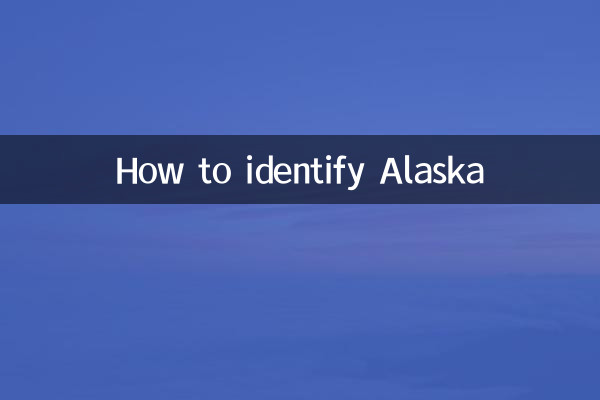How to Identify an Alaskan: A Comprehensive Guide from Characteristics to Conservation
Alaskan dogs are large working dogs that are loved for their majestic appearance and docile temperament. However, many people tend to confuse the Alaskan with other dog breeds, such as the Husky, when shopping for or identifying the Alaskan. This article will provide you with a structured identification guide based on the popular pet-raising topics in the past 10 days.
1. Basic characteristics of Alaska

The following are the core characteristics of Alaskan dogs, which can be quickly grasped through table comparison:
| Features | alaskan dog | Dog breeds that are easily confused (such as Husky) |
|---|---|---|
| body shape | Large dog, height at the shoulder 58-71cm, weight 34-54kg | Medium-sized dog, height at the shoulder 50-60cm, weight 16-27kg |
| Coat color | Black and white, gray and white, red and white, etc., thick and fluffy hair | More diverse coat colors (including pure white), shorter and close-fitting hair |
| eyes | Brown is the main color, blue is not allowed | Common blue or heterochromatic pupils |
| tail | Curly and upturned, the hair is as thick as feathers | Naturally drooping, short hair |
2. Relevance of recent popular pet raising topics
Based on the hot discussions on social media in the past 10 days, Alaska-related topics mainly focus on the following aspects:
| topic | heat index | Key points for identifying associations |
|---|---|---|
| "The difference between Alaska and Erha" | Search volume +320% | Focus on comparing eye color and body shape differences |
| “Large Dog Summer Care” | Discussion volume 12,000+ | The double coat is a signature feature of Alaska |
| "Sled Dog Personality Test" | The short video has been viewed more than 8 million times | Alaska is more stable and quiet during puppyhood |
3. Advanced identification skills
1.Behavioral characteristics:Alaskans exhibit a typical "sled dog gait" when exercising, with obvious rear drive and steady steps.
2.Head features:The skull is broad, the muzzle is thick, the ears are wide apart, and the ears are triangular and upright.
3.Proof of ancestry:Regular kennels will provide FCI or AKC certified pedigree certificates, including three generations of pedigree records.
4. Maintenance precautions (recent hot topics)
Regarding the discussion on pet raising during the recent hot weather, Alaska needs special attention:
| Maintenance project | Specific requirements | summer adjustment plan |
|---|---|---|
| diet | High protein dog food + joint health products | Increase hydration and avoid feeding at noon |
| sports | More than 60 minutes a day | Change to morning and evening cooler time activities |
| hair care | Brush 3 times a week | Avoid shaving and clean the undercoat regularly |
5. Clarification of common misunderstandings
1."All Alaska loves howling":Actually quieter than a husky, the unusual howling may be due to separation anxiety.
2."The whiter the coat, the purer it is":According to AKC standards, facial marking symmetry is more important than color shade.
3.“The bigger the better”:Excessive weight may cause hip joint diseases, so please refer to the standard range.
Through the above structured comparison and recent hotspot associations, I believe you can more accurately identify real Alaskan dogs. It is recommended to choose a regular kennel when purchasing and obtain a complete health test report.

check the details

check the details